GME TX4600 Handleiding
Bekijk gratis de handleiding van GME TX4600 (32 pagina’s), behorend tot de categorie Radio. Deze gids werd als nuttig beoordeeld door 55 mensen en kreeg gemiddeld 4.4 sterren uit 28 reviews. Heb je een vraag over GME TX4600 of wil je andere gebruikers van dit product iets vragen? Stel een vraag
Pagina 1/32

T X 4 6 0 0 I N S T R U C T I O N M A N UA L PA G E 1
Ingress protected 5 watt UHF CB radio
I N S T R U C T I O N M A N U A L

PAG E 2 INS TRUC TION MAN UAL TX4600
IMPORTANT INFORMATION .........................................3
SAFETY INFORMATION................................................3
EMERGENCY CHANNELS.............................................3
TELEMETRY CHANNELS ...............................................3
FEATURES ...................................................................4
CONTROLS ..................................................................5
Front Panel ............................................................5
LCD Display ...........................................................5
Microphone ...........................................................5
GENERAL OPERATION .................................................6
Function Key .........................................................6
Volume On/Off ......................................................6
Selecting Channels ................................................6
Transmitting ..........................................................6
Squelch Control .....................................................6
Squelch Sensitivity .................................................6
Priority Channel .....................................................7
Duplex Operation ..................................................7
CTCSS .........................................................................7
Overview ...............................................................7
Monitoring the Channel........................................7
Selecting the Tone Set ...........................................7
Selecting the Required CTCSS Tone ........................7
Enabling CTCSS on a Channel................................7
Disabling CTCSS on a Channel ...............................8
SCANNING .................................................................8
Overview ...............................................................8
Scan Groups ..........................................................8
Selecting the Scan Group .......................................8
Programming Scan Channels .................................8
To Start Scanning ..................................................9
To Stop Scanning ...................................................9
OPEN SCAN MODE .....................................................9
Using Scan in the Open Scan Mode .......................9
GROUP SCAN MODE ...................................................9
Setting Up the Group Scan ..................................10
Scanning in the Group Scan Mode .......................10
Using Two Group Scan or Two Open Scan Modes .10
SELECTIVE CALLING ..................................................11
Overview .............................................................11
SelCall Identification Number ...............................11
SelCall Indent Names ..........................................11
The Quiet Mode (Q) .............................................11
SelCall Memories .................................................12
USING SELCALL ........................................................12
Entering a SelCall Indent .....................................12
Sending a SelCall ................................................12
................................................12Call Acknowledge
Storing SelCall Indents .........................................12
Recalling SelCall Indents From Memory ................13
Naming Your SelCall Indents ................................13
......................................13Displaying Alpha Names
Entering and Storing a SelCall Name ....................13
Receiving SelCalls ................................................14
Cancelling the SelCall Alert ..................................14
Quiet Mode .........................................................15
Setting Up the Quiet Mode ..................................15
Activating the Quiet Mode ...................................15
De-activating the Quiet Mode ..............................15
Receiving Signals in the Quiet Mode ....................15
Scanning in the Quiet Mode ................................16
To Scan in the Quiet Mode ..................................16
16Receiving Signals while Scanning in the Quiet Mode
GROUP CALLING.......................................................16
Programming and Sending Group Calls ................17
LISTENING CHANNELS ..............................................17
Setting the Frequency Steps .................................18
Activating Listening Channels ..............................18
Programming the Frequencies ..............................18
Setting Alpha Labels for your Listening Channels ..18
SEEK MODE ..............................................................19
Enabling the Seek Mode ......................................19
Scanning for Active Frequencies in Seek Mode .....19
Setting Seek Mode Frequency Limits ....................19
MENU SETTINGS .......................................................20
Overview .............................................................20
............................21Frequency / Alpha Adjustments
Setting the Squelch Sensitivity .............................21
Selecting the Scan Mode .....................................21
Selecting Duplex ..................................................22
CTCSS .......................................................22 Tones
Lamp Colour .......................................................23
Battery / S Metre / Alpha Selection .......................23
LCD Contrast .......................................................24
..................................................24Beep Tone Level
INSTALLATION ..........................................................24
General ...............................................................24
Installing the Unit ................................................25
DC Connections ..................................................25
Antenna Installation ............................................26
Noise Suppression ...............................................26
Disconnecting the Microphone.............................26
UHF CB OPERATING FREQUENCIES ...........................27
CTCSS TONE FREQUENCY CH ..............................28ART
SPECIFICATIONS .......................................................29
SC CONTRACT WARRANTY AGAINST DEFECTS ..........30
CONT ENT S

TX4600 INS TRUC TION MAN UAL PA GE 3
IMPORTA NFONT I RMATION
CONCERNIN C OG UHF B RADI
The use of the Citizen Band radio service
is licensed in Australia by the ACMA Radio
communications (Citizens Band Radio Stations)
Class Licence and in New Zealand by the
Ministry of Economic Development New
Zealand (MED). A General User Radio Licence
for Citizens Band radio and operation is subject
to conditions contained in those licences.
The class licence for users and equipment
operating in the CB/PRS 477 MHz band has
been amended. This radio meets the new 80
channel standard.
In simple terms the same amount of spectrum is
available; however,
radio transceivers can now
operate in a narrower bandwidth and hence
use less spectrum. These radios are generally
referred to as narrowband or 12.5 kHz radios.
By using 12.5 kHz channel spacing instead of
25 kHz, the 40 channels originally allocated
can now be expanded to 80 channels thereby
doubling the channel capacity and relieving
congestion in the UHF CB/PRS band.
Original 40 channel wideband Radios will
continue to operate on the original 40 channels,
however they will not be able to converse on the
newer channels 41 – 80. The newer narrowband
radios will be able to converse with all older 40
channel wideband radios on all channels 1 to 40 as
well as the newer channels allocated from 41 to 80.
The mixing of narrowband and wideband radios
in the same spectrum can cause some possible
operating issues of interference and varying
levels of received volume.
S NF OAFET Y I RMAT ION
The TX4600 is a radio transmitting device.
•Whentransmitting,keeptheantennamore
than 25 mm from any part of the head
or body.
•Donottransmitnearelectricalblasting
equipment or in explosive atmospheres.
•Do not allow children to operate aradio
transmitter unsupervised.
POSSIBLE ISSUES
When a new narrowband radio receives a
transmission from an older wideband radio the
speech may sound loud and distorted - simply
adjust the radio volume for best performance.
When an older wideband radio receives a signal
from a new narrowband radio, it may sound quiet
- simply adjust your volume for best performance.
There can be interference from a transmitting
radio if it is close to another transmitting radio
using a channel adjacent to the channel you are
listening to. Simply try going up or down a few
channels from the currently selected channel.
The above situations are not a fault of the radio
but a symptom of operating wideband and
narrowband radios in the same bandwidth. This
possible interference will decrease over time as the
population of wideband radios ages and decreases.
Further information and updates are available
from the Australian Communications and Media
Authority (ACMA) at www.acma.gov.au and the
Ministry of Economic Development (MED), Radio
Spectrum Management at: www.rsm.govt.nz
EME YRGE NC CHANNE LS
The ACMA has allocated channels 5/35 for
emergency use only. Channel 5 is the primary Simplex
Emergency Channel. Where a Channel 5 repeater is
available, you should select Duplex on CH 5.
NOTE: Channel 35 is the input channel for
the Channel 5 repeater therefore Channel 35
should also not be used for anything other than
emergency transmissions.
T M ELE ET RY CHA NNELS
ACMA regulations have allocated channels
22 and 23 for telemetry only applications and
have prohibited the transmission of speech on
these channels. Consequently the TX4600 has a
transmit inhibit applied to channels 22 and 23.
In the event additional telemetry/telecomand
channels are approved by the ACMA, these
channels shall be added to those currently listed
where voice transmission is inhibited. Currently
transmissions on channels 61, 62 and 63 are also
inhibited and these channels are reserved for
future allocation.
Product specificaties
| Merk: | GME |
| Categorie: | Radio |
| Model: | TX4600 |
Heb je hulp nodig?
Als je hulp nodig hebt met GME TX4600 stel dan hieronder een vraag en andere gebruikers zullen je antwoorden
Handleiding Radio GME

6 Juli 2023

6 Juli 2023

4 Juli 2023

3 Juli 2023

26 Juni 2023
Handleiding Radio
- GPO
- Denver
- Harley Davidson
- Clatronic
- Camry
- Clint
- E-bench
- Esky
- Jazmm
- Dcybel
- Boston Acoustics
- Sang
- Laser
- Pinell
- Sunstech
Nieuwste handleidingen voor Radio
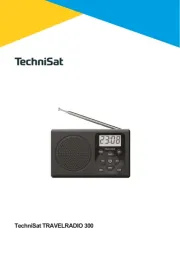
16 September 2025

15 September 2025
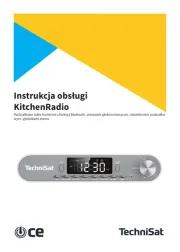
15 September 2025
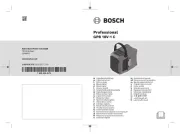
15 September 2025

13 September 2025
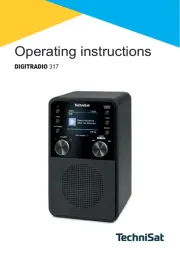
13 September 2025

12 September 2025
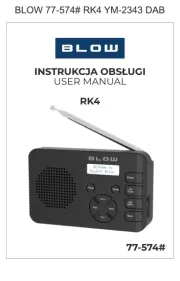
9 September 2025
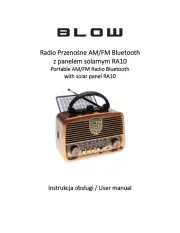
8 September 2025
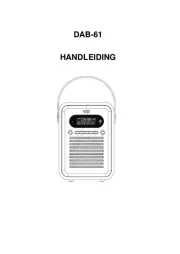
8 September 2025